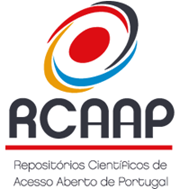Principais oportunidades e desafios socioeconómicos resultantes da configuração demográfica angolana
DOI:
https://doi.org/10.25746/ruiips.v11.i2.32800Palavras-chave:
Configuração demográfica, Angola, oportunidades, desafiosResumo
Conhecer as questões demográficas e tê-las em conta no processo de tomada de decisões de um país constitui um elemento fundamental para o êxito de políticas públicas e bem-estar. Um crescimento e /ou descrecimento demográfico, acarreta consequências, ou seja, oportunidades e desafios. O presente textotem como objetivo analisar os principais desafios e oportunidades socioeconómicas resultantes da configuração demográfica. Para a elaboração deste trabalho fez-se recurso ao método quali-quantitativo, à técnica de pesquísa bibliográfica e revisão bibliográfica.O presente estudo baseou-se essencialmente, na revisão da literatura disponível sobre o referido tema, principalmente a consulta de estudos já realizados em outros países. Recorreu-se também a diversos dados estatísticos sobre dinâmica demográfica, composição da população, que permitiram produzir representações gráficas “indispensáveis” para a análise do assunto em abordagem. Assim sendo, foram utilizados dados estatísticos de várias fontes, destacando os produzidos pelo Instituto Nacional de Estatística: Recenseamento Geral da População e Habitação (RGPH-2014); Projecção da População para o período 2014-2050, Inquérito de Emprego em Angola, Inquérito de Indicadores Mútliplos de Saúde 2015-2016, Estudo sobre o Dividendo Demográfico em Angola, entre outras. O referido trabalho é de suma importância, pois, deste, podem ser extraídas inormações imprescindíveis a se ter em conta para materialização e êxito de várias políticas públicas. No referido trabalho de investigação ficou claro e patente, que a estrutura populacional jovem que Angola apresenta, acaba sendo uma imprescindível oportunidade social e conómica. A taxa de crescimento demográfico exponencial que se verifica em Angola (3,2%) e a alta taxa de fecundidade constituem desafios sociais e económicos que se deve enfrentar. Este acelerado crescimento demográfico não é sustentável, pelo facto do mesmo não ser acompanhado pela taxa de crescimento económico e investimentos desejados para o aproveitamento do dividendo demográfico.
Downloads
Publicado
Como Citar
Edição
Secção
Licença
Direitos de Autor (c) 2023 Justino Angolar

Este trabalho encontra-se publicado com a Licença Internacional Creative Commons Atribuição-NãoComercial-SemDerivações 4.0.
Autores que publicam nesta revista concordam com os seguintes termos:
- Autores conservam os direitos de autor e concedem à revista o direito de primeira publicação, com o artigo simultaneamente licenciado sob a Licença Creative Commons Attribution que permite a partilha do trabalho com reconhecimento da autoria e publicação inicial nesta revista.
- Autores têm autorização para assumir contratos adicionais separadamente, para distribuição não-exclusiva da versão do artigo publicado nesta revista (ex.: publicar em repositório institucional ou como capítulo de livro), com reconhecimento de autoria e publicação inicial nesta revista.
- Autores têm permissão e são estimulados a publicar e distribuir o seu trabalho online (ex.: em repositórios institucionais ou na sua página pessoal) a qualquer ponto antes ou durante o processo editorial, já que isso pode gerar alterações produtivas, bem como aumentar o impacto e a citação do trabalho publicado.




